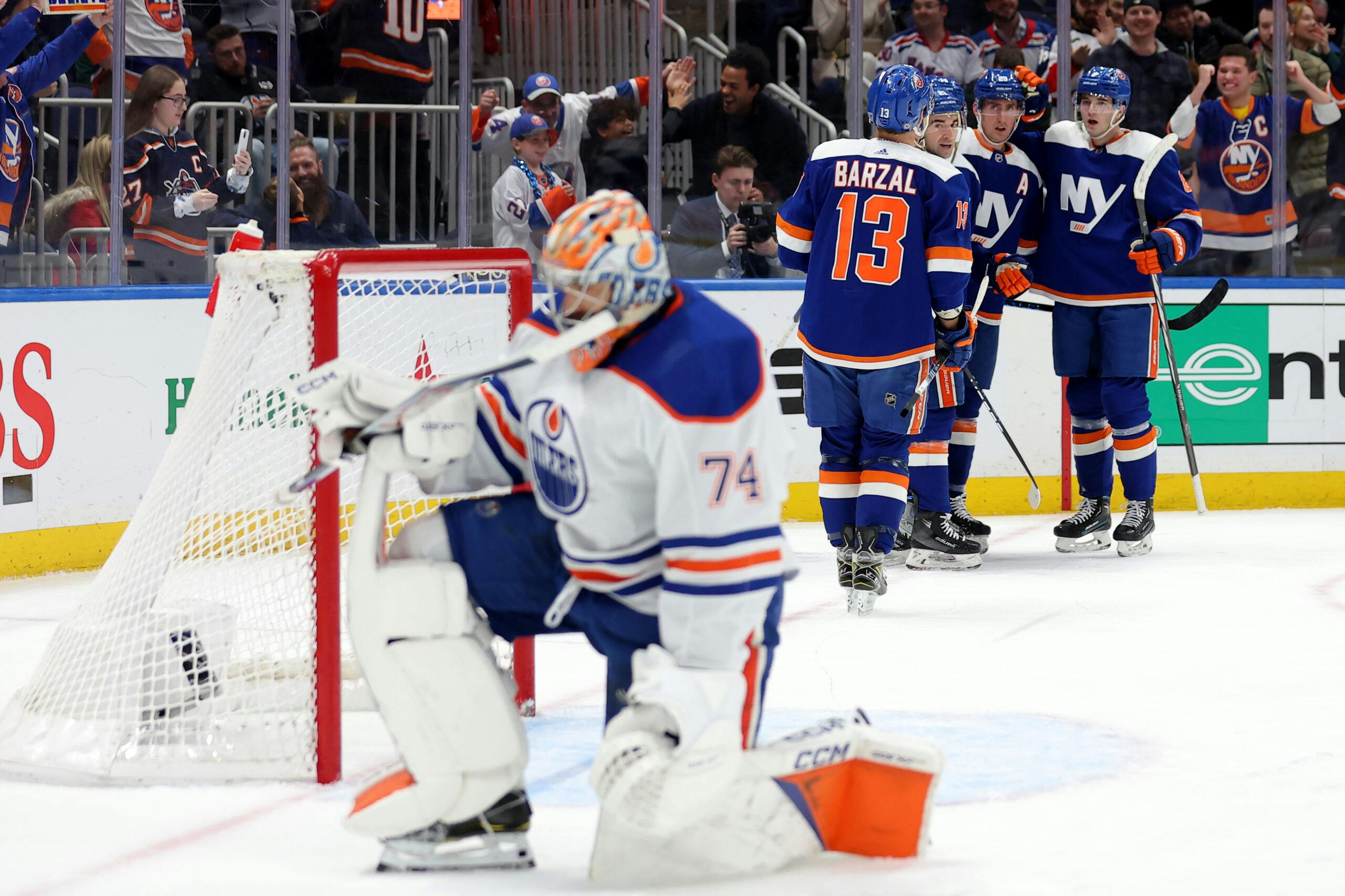An area that’s quickly become a spot of bother for the Edmonton Oilers has been their penalty kill, which has gone from being one of the hottest in the league to one of the absolute worst. And it appears to have fallen off ever since the NHL All-Star Break.
In the ten games since the break, the Oilers penalty kill has allowed twelve goals in 49 minutes of play — a rate of 14.69 goals against per hour, the second highest in the league, only better than Columbus. It’s jarring when you compare this current rate to what the Oilers had posted in the 45 games prior to the All-Star break, when the penalty kill had allowed 26 goals in 253 minutes — a rate of only 6.16 goals against per hour, seventh lowest in the league. Recently, teams like Arizona, Anaheim, St. Louis, and Calgary, who have had trouble generating chances and goals on their powerplays this season, didn’t seem to have many issues against Edmonton.
A big reason for the Oilers penalty kill success in the first 45 games of the season was their ability to suppress shot attempts and shots on goal. They allowed the third-lowest rate of unblocked shot attempts (66.83 per hour) and the sixth-lowest rate of shots against (48.58 per hour). And the shots that did get through were stopped 87.32 percent of the time, which was right around league average.
But in the ten games since the All-Star break, the rate of shots and chances against has increased significantly. For instance, the rate of shots on goal has increased by 36.1 percent, going from 48.58 per hour to 66.10 per hour. And what’s made things worse is that the goaltending isn’t nearly as good as it was earlier in the season, with the team save percentage dropping by 10.9 percent, so the skaters aren’t getting bailed out when mistakes are happening.
It’s hard to pinpoint why exactly the Oilers are allowing more shots and chances against. The same group of forward and defencemen are getting regular time on the penalty kill and it appears that everyone’s individual on-ice rate of shots and chances against have gone up in these last ten games. So it appears to be more of a system-wide, tactical and execution issue than a deployment one.
For reference, the table below lists each player’s ice time before and after the All-Star Break and their personal proportion of the team’s total time on the penalty kill. The first table lists the forwards, sorted by their ice time in the first 45 games of the season, and the second table lists the defencemen.
Something worth noting is that Connor Brown is getting a higher proportion of ice time in the last ten games, which makes sense considering his on-ice rate of shots and chances against on the second penalty kill unit has been solid this season. Ryan Nugent-Hopkins and Derek Ryan are also seeing a slightly higher proportion, which is somewhat concerning considering their numbers are some of the worst on the team. It might be worth getting McLeod some more minutes, considering he’s done well on the penalty kill in the past. It’s a little odd to see his ice time decrease. And Vincent Desharnais is another player who has helped drive positive results for the team, and his ice time appears to have slipped slightly in the last ten games.
The team’s rate of shots against has gone down slightly in the last five games, but it’s a little early to predict if the results will get better. Regardless, the coaching staff needs to figure things out as the penalty kill results (-10 differential in the last ten) is basically wiping out the team’s success on the powerplay (+7 differential) – a competitive edge that’s going to be critical down the stretch and into the playoffs.
Data: Natural Stat Trick

